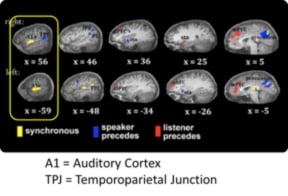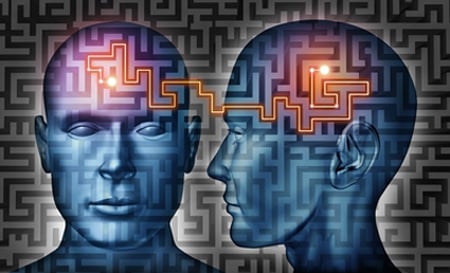by Ryan H. Flax, Esq.
(Former) Managing Director, Litigation Consulting
A2L Consulting
In my last post, I discussed how important it is for every litigator to tell a story, because jurors will always frame the facts of a trial in the form of a story. As storytelling litigators, we need to relay to our audience: (1) what happened; (2) where it happened; and (3) why we care. We must set the scene: By the time you’re done with your opening statement, your audience should know “what the weather was like” (literally or figuratively) when liability arose. Finally, it’s necessary to provide a social tie-in – some reason why your jurors would wish to absorb and retell the story you’re telling. Otherwise, there’s no reason for them to pay attention.
That last bit is somewhat surprising, but is very important to remember. One of the first things that humans consider when taking in new information is its social value to them – whether it’s worth their remembering so that they can reap some value in its retelling (consider, by analogy, Facebook “status updates” and “sharing”). New information is filtered through a social network of the brain more than by our IQ centers.
When researchers studied human information uptake using MRI scanning, the areas of the brain expected to be most activated, i.e., those relating to memory, deep encoding, higher-level abstract reasoning, and executive function, were not activated. Instead, the brains’ regions central to thinking about other people’s goals, feelings, and interests (“theory of mind”) were those most highly activated. This was surprising, but is an important lesson to those of us who rely on persuasion for our livelihood.
What are the implications? Spreading ideas, norms, values, and culture depend less on IQ-type intelligence and more on the influencer’s social-cognitive abilities, use of emotions, and motivation.
We must understand two things about persuasion:
1. You cannot change jurors or their capacities; but
2. You can change your approach to them. You can tailor your approach by putting the facts into the context of a story, both verbally and visually.
An effective story provides relationships between the facts and the characters. It addresses the characters’ motives or intentions. It puts this information into a context, a physical and psychological environment – the setting. Doing these things will make you more persuasive. How do we know this? We can read the brains of storytellers and story-listeners.
Studies show that while listening to an effective story, listeners’ brains react more like participants than spectators. We say that people experiencing a deep connection are “on the same wavelength.” What’s amazing is that there is neurological truth to that.
 Scientists at Princeton University looked at brain scans (fMRI) of storytellers and listeners to the stories. They found that the most active areas of the brains of the speakers and listeners matched up; they were in sync, or coupled. However, this synchronized activity was found in the areas of the brain relevant to theory of mind, not in areas that drive memory or the prefrontal cortex associated with cognitive processing. The stronger the reported connection between speakers and listeners, the more neural synchronicity was observed in the test subjects (yellow color in the image above). The extent of brain activity synchronicity predicted the success of the communication – so connecting with your audience more makes you more persuasive.
Scientists at Princeton University looked at brain scans (fMRI) of storytellers and listeners to the stories. They found that the most active areas of the brains of the speakers and listeners matched up; they were in sync, or coupled. However, this synchronized activity was found in the areas of the brain relevant to theory of mind, not in areas that drive memory or the prefrontal cortex associated with cognitive processing. The stronger the reported connection between speakers and listeners, the more neural synchronicity was observed in the test subjects (yellow color in the image above). The extent of brain activity synchronicity predicted the success of the communication – so connecting with your audience more makes you more persuasive.
Other research using brain scans reveals other important information relating to effective storytelling and will help us plan our course of action on the persuasion track. This research shows that our brains react differently based on the types of words used. Information (e.g., evidence) presented to test subjects without using sensory language stimulates only the brain’s language areas (Broca’s and Wernicke’s areas), and this is interpreted as “noise” (blah, blah, blah, blah). The task for the listener is seen as remembering words and more words – which is not fun and not interesting for the audience and makes keeping them engaged and persuading them much more difficult.
Research finds that use of sensory language actually stimulates the same areas of subjects’ brains as the original action would (e.g., the olfactory cortex when hearing descriptive words involving smell such as lavender and cinnamon, or the motor cortex when hearing about movement). Litigation is about persuasion, which can only happen, research shows, by literally changing the brain of your audience. This brain-changing requires accessing the correct neurotransmitters, which are especially present when a person is: curious, predicting, and/or emotionally engaged. These are your goals when planning your persuasive track strategy.
Oxcytocin is the neurotransmitter we most care about when attempting to persuade an audience. It’s the trust/empathy molecule. It is increased in audience members after they listen to stories eliciting empathy. Hearing inspirational stories causes more blood to flow to our brain stem. The brain stem is the part of our brain that makes our heart beat, regulates our breathing and keeps us alive. Thus, using effective storytelling to persuade means you’ve literally induced a reaction from the very substrate of your audiences’ foundation for biological survival.
Other A2L Consulting resources related to storytelling in litigation:
- Storytelling at Trial - Will Your Story Be Used?
- Planning For Courtroom Persuasion? Use a Two-Track Trial Strategy
- WATCH: Storytelling for Litigators Webinar
- DOWNLOAD: Storytelling for Litigators E-Book
- WATCH: Using PowerPoint Litigation Graphics for the Win
- How To Emotionally Move Your Audience
- 10 Videos to Help Litigators Become Better at Storytelling
- Are You Smarter Than a Soap Opera Writer?
- Good-Looking Graphic Design ≠ Good-Working Visual Persuasion
- Don't Be Just Another Timeline Trial Lawyer
- 20 Great Courtroom Storytelling Articles from Trial Experts
- Portray Your Client As a Hero in 17 Easy Storytelling Steps
- No Story, No Glory: Closing Arguments that Don't Close Loops
- 5 Keys to Telling a Compelling Story in the Courtroom
- Patent Litigation Graphics + Storytelling Proven Effective: The Apple v. Samsung Jury Speaks






Leave a Comment